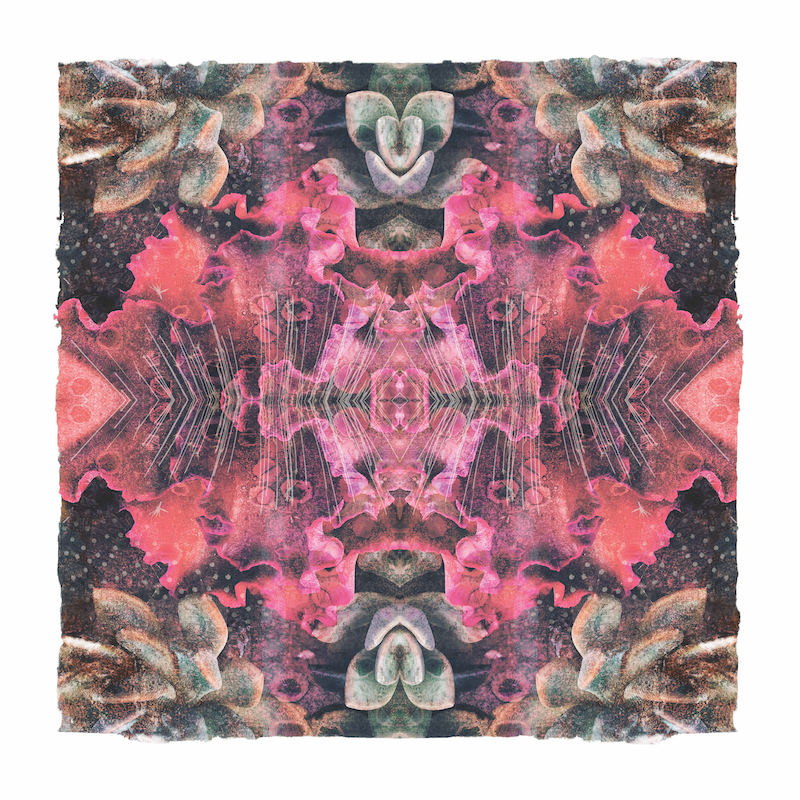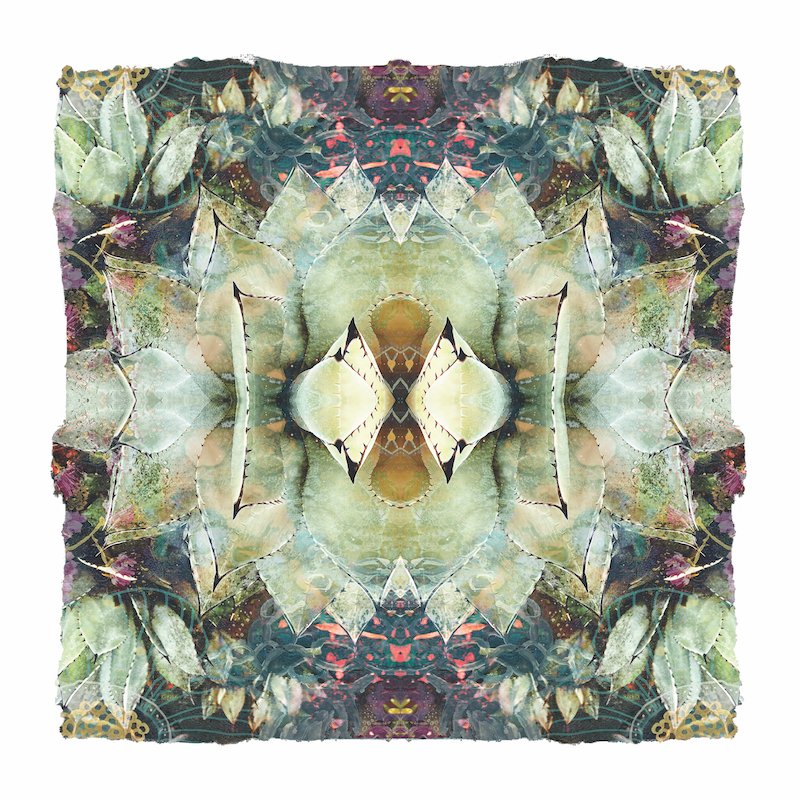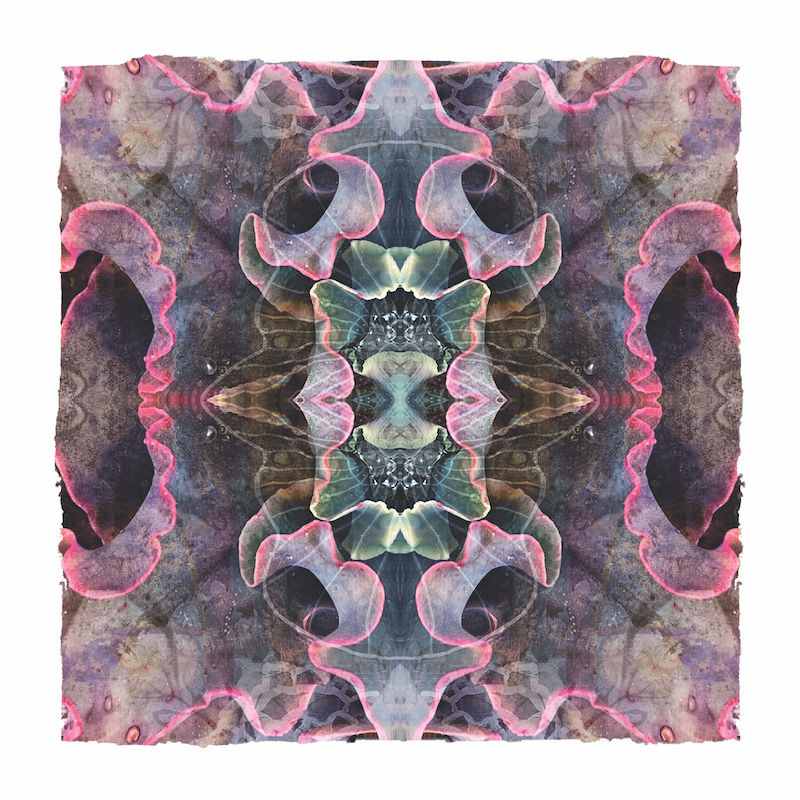The art of Sydney-based photographer Danielle Wright has entered a new era, with the artist having developed an entirely new style to match the symmetry of her subjects. Long having been inspired by the natural world, Wright’s practice has recently been animated by the natural patterns and symmetry of succulents.
Adapted to dry environments, succulents are visually striking, many growing with thick leaves placed in whorls around a central axis. Much like the plants, Wright’s work takes images of the many strange and wondrous varieties and splices them in a mirrored pattern to create entirely new entities. Describing the finished works as “a mosaic of surreal gardens”, these works incorporate line, text and colour to evoke a sense of otherworldliness.
The complex images balance order and chaos, repeating elements in a flow of texture and form. Wright finds this use of pattern and repetition to be reflective of her own creative process. “My art practice is a pattern, one that is an infinite cycle of creation.” Like any artist, she experiences ebbs and flows of creative inspiration, repeating in a cycle that she fully embraces. Wright’s artmaking and artworks intertwine in her new works, harnessing natural forms to create enchanting new worlds through the echoes of reality.
Above: Danielle Wright, Takasago no Okina #1, 2023. Fine art photographic print, edition of 3, 52 x 52cm. Courtesy: the artist.

Danielle Wright, Fanfare, 2023. Fine art photographic print, edition of 3, 52 x 52cm. Courtesy: the artist.

Danielle Wright, Parry’s Century, 2023. Fine
art photographic print, edition of 3, 52 x 52cm. Courtesy: the artist.

